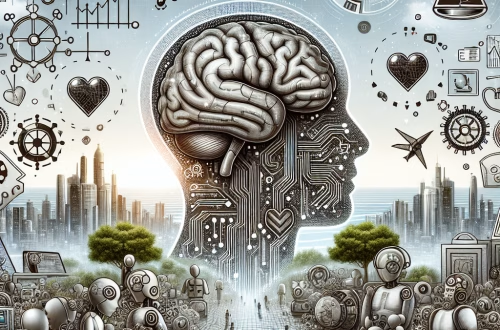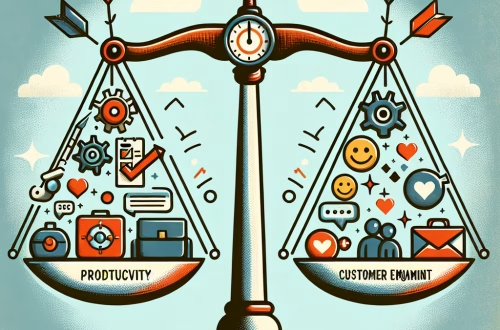Optimizing AI Models for Automated Contract Clause Extraction
Summary
Automated contract analysis using AI models is revolutionizing legal and business workflows, but extracting highly specific clauses remains a technical challenge. This article delves into optimizing AI models for precise clause extraction, focusing on advanced natural language processing (NLP) techniques, custom fine-tuning, and enterprise deployment considerations. We explore how businesses can overcome performance bottlenecks, improve accuracy, and scale solutions for large document volumes, ensuring actionable insights and cost-effective contract management.
What This Means for You
Practical implication: By implementing optimized AI models, businesses can significantly reduce manual contract review time, leading to faster decision-making and improved operational efficiency.
Implementation challenge: Fine-tuning AI models for specific legal terminologies and clauses requires high-quality training datasets and domain expertise, which can be resource-intensive.
Business impact: Accurate clause extraction minimizes legal risks and ensures compliance, providing a strong return on investment (ROI) for legal teams and enterprises.
Future outlook: As AI models evolve, integrating explainability features and ensuring data privacy will be critical. Businesses must also prepare for regulatory changes affecting AI use in legal contexts.
Introduction
Contracts are the backbone of business operations, yet manual review processes are time-consuming and error-prone. AI-powered contract analysis offers a solution, but extracting specific clauses—such as termination terms, indemnities, or confidentiality agreements—requires specialized optimization. This article explores the technical challenges and solutions for optimizing AI models to automate clause extraction, providing actionable insights for legal professionals and businesses seeking to streamline their workflows.
Understanding the Core Technical Challenge
Clause extraction involves identifying and categorizing specific sections within a contract, which requires advanced NLP capabilities. Traditional models often struggle with domain-specific terminologies, contextual nuances, and variations in document formats. The challenge lies in training AI models to recognize these patterns accurately while maintaining high precision and recall rates, especially in large-scale enterprise environments.
Technical Implementation and Process
To optimize AI models for clause extraction, businesses must follow a structured approach. First, data preprocessing is essential—cleaning and annotating contract datasets to ensure high-quality training inputs. Next, fine-tuning pre-trained models like GPT or BERT on domain-specific data enhances their ability to understand legal language. Finally, integrating these models into existing workflows requires robust APIs and scalable infrastructure to handle large document volumes efficiently.
Specific Implementation Issues and Solutions
Issue: Training Data Quality
Low-quality or insufficient training data can lead to poor model performance. To address this, businesses should collaborate with legal experts to curate and annotate datasets, ensuring they cover a wide range of contract types and clauses. Data augmentation techniques, such as synthetic data generation, can also help expand training sets.
Related Technical Challenge: Contextual Ambiguity
Contracts often contain ambiguous language that confuses general-purpose models. Fine-tuning models with legal-specific corpora and incorporating attention mechanisms can improve their ability to resolve contextual ambiguities.
Performance Aspect: Scalability
Handling thousands of contracts simultaneously requires efficient processing pipelines. Using distributed computing frameworks like Apache Spark and optimizing model inference with techniques like quantization can enhance scalability.
Best Practices for Deployment
1. Dataset Curation: Invest in high-quality, domain-specific datasets for training and validation.
2. Model Selection: Choose models with strong NLP capabilities, such as GPT-4 or Claude 3, and fine-tune them for legal contexts.
3. Infrastructure Planning: Use cloud-based services like AWS or Azure for scalable deployment.
4. Explainability: Implement explainability tools to provide insights into model decisions, ensuring transparency and trust.
Conclusion
Optimizing AI models for automated clause extraction is a game-changer for contract analysis, offering significant time and cost savings. By addressing technical challenges like data quality, contextual ambiguity, and scalability, businesses can unlock the full potential of AI in legal workflows. With careful planning and deployment, these models can deliver actionable insights, reduce risks, and enhance compliance, making them invaluable tools for modern enterprises.
People Also Ask About
How accurate are AI models for contract clause extraction?
Modern AI models can achieve high accuracy (90%+) with proper fine-tuning and high-quality datasets. However, performance varies based on the complexity of contracts and the specificity of clauses.
Can AI extract clauses from unstructured contracts?
Yes, AI models can process unstructured contracts by leveraging NLP techniques. However, preprocessing steps like OCR (optical character recognition) are often required for scanned documents.
What industries benefit most from automated clause extraction?
Industries with high volumes of contracts, such as legal, real estate, healthcare, and finance, benefit significantly from automated solutions.
Is it safe to use AI for sensitive legal documents?
Yes, provided that proper data security measures, such as encryption and access controls, are implemented. Private, self-hosted AI models can further enhance security.
Expert Opinion
Optimizing AI models for clause extraction requires a balance between technical expertise and domain knowledge. Businesses should prioritize explainability and scalability to ensure long-term success. Additionally, staying ahead of regulatory changes will be crucial for maintaining compliance and trust in AI-driven legal solutions.
Extra Information
1. AWS Legal AI Solutions – Explore AWS tools for legal document analysis and clause extraction.
2. Hugging Face Transformers – Learn how to fine-tune NLP models for specific use cases.
3. OpenAI Research – Stay updated on advancements in GPT models for legal applications.
Related Key Terms
- AI for contract clause extraction
- fine-tuning NLP models for legal documents
- automated contract analysis tools
- enterprise AI for legal workflows
- scalable AI solutions for contract management
- optimizing AI for document processing
- AI-driven legal compliance tools
Check out our AI Model Comparison Tool here: AI Model Comparison Tool
*Featured image generated by Dall-E 3



